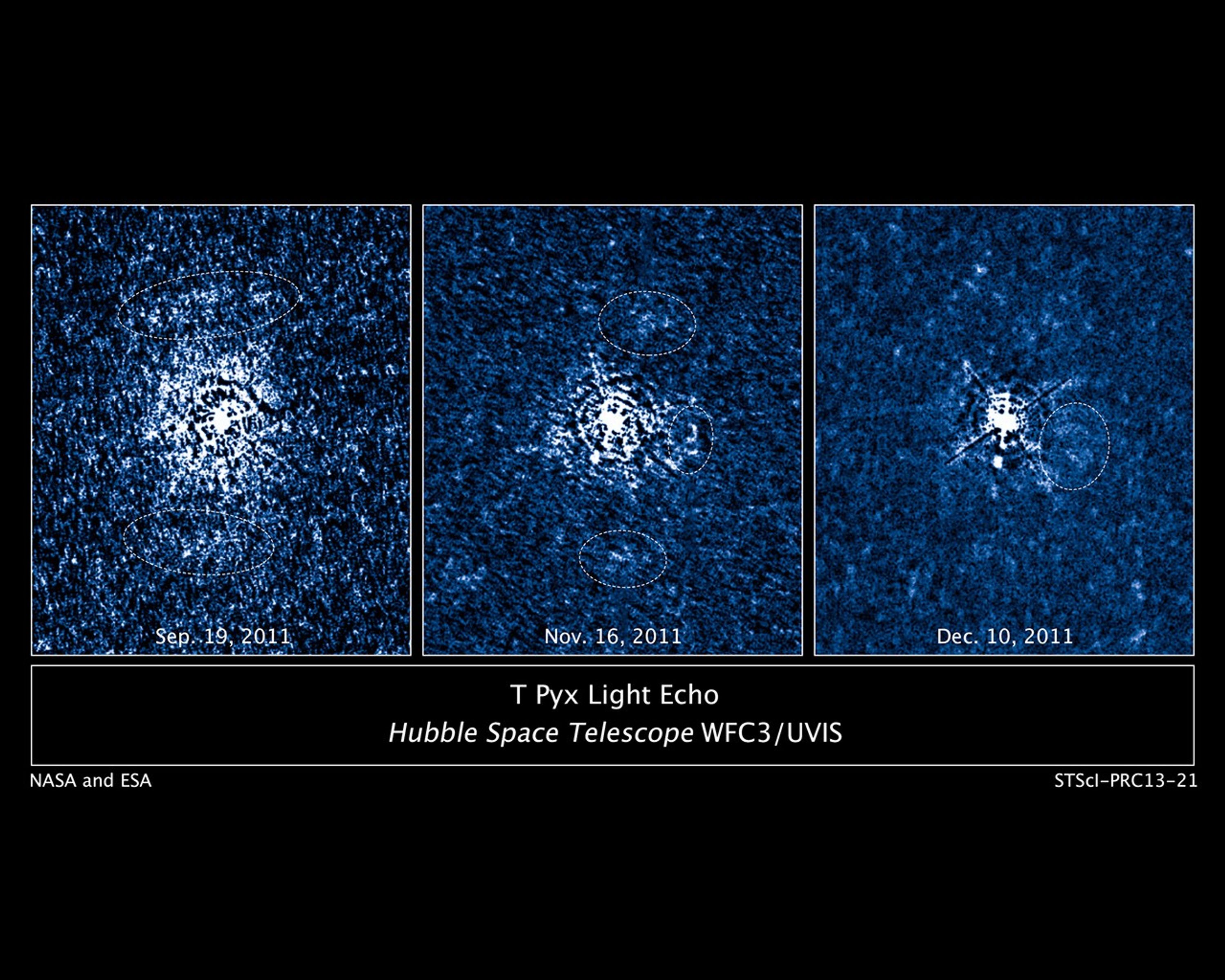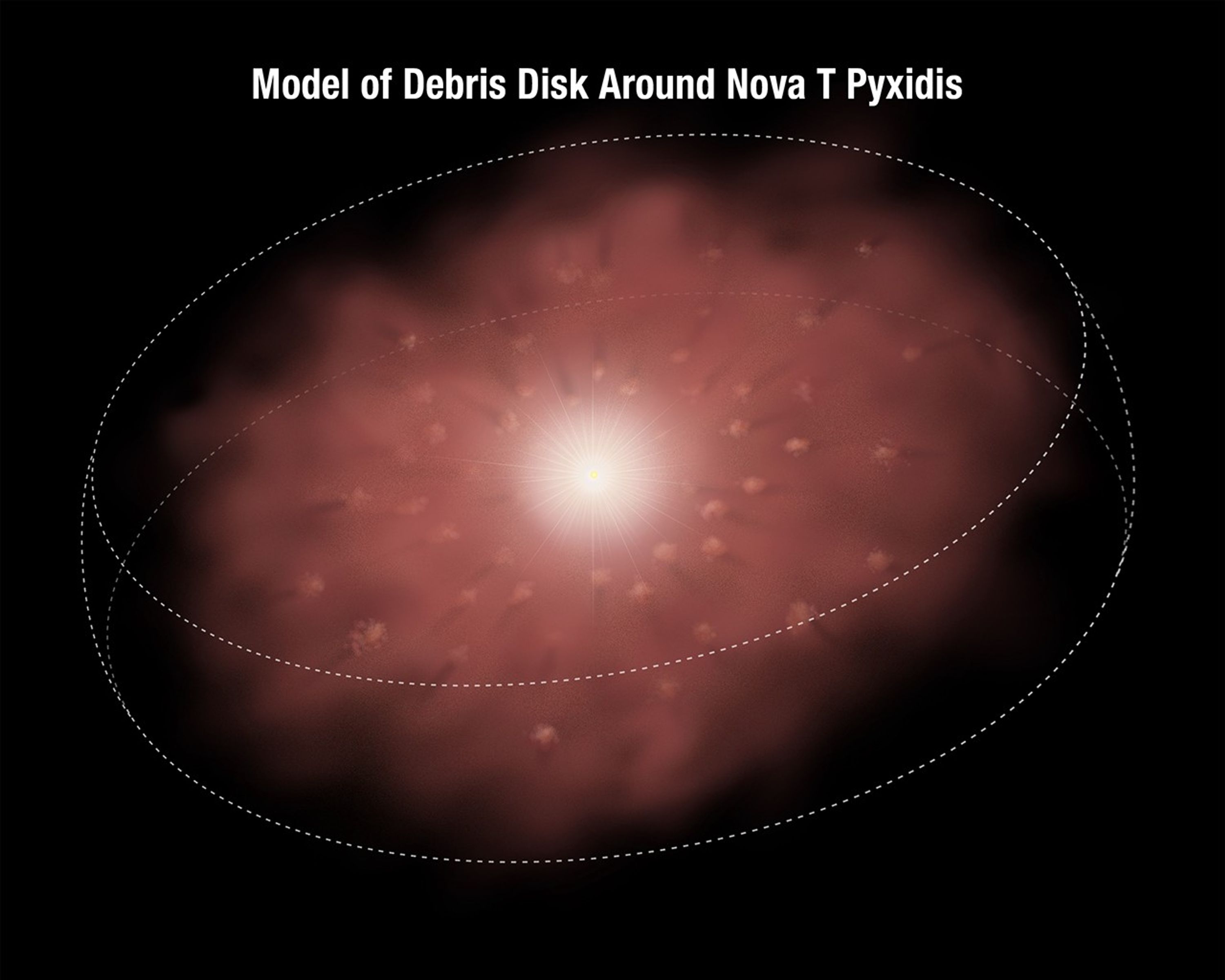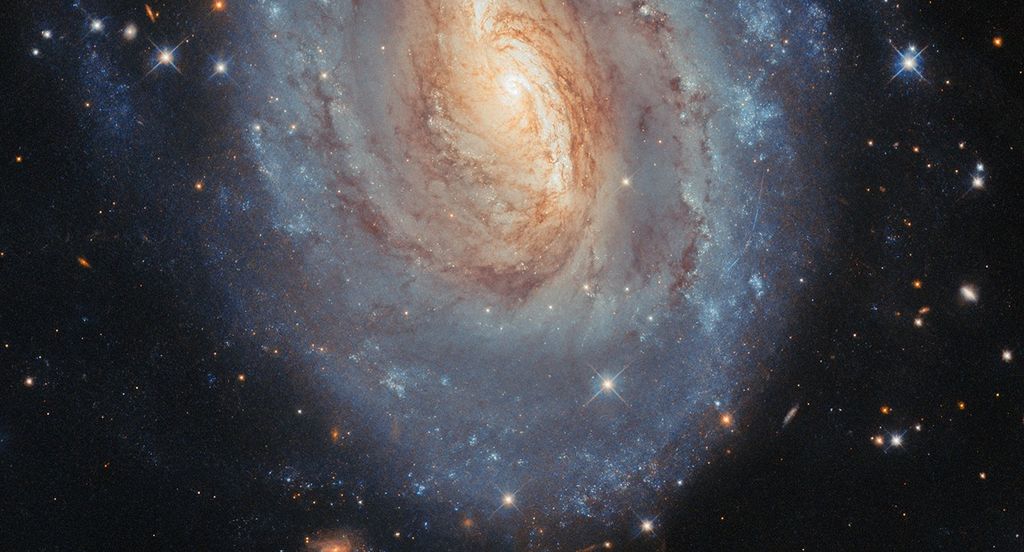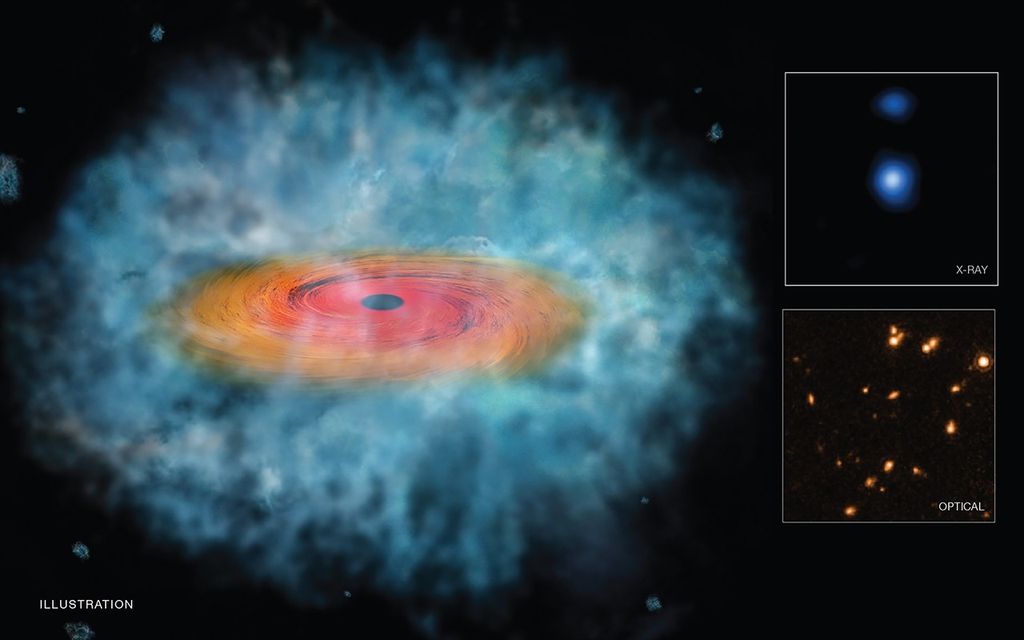1 min read
Flash of Light from Erupting Star Illuminates Debris Disk

These three images taken by NASA's Hubble Space Telescope reveal a disk of previously ejected material around an erupting star being illuminated by a torrent of light unleashed during a stellar outburst.
Hubble's Wide Field Camera 3 imaged the double-star system T Pyxidis, or T Pyx, over a four-month period. T Pyx is a recurrent nova, erupting every 12 to 50 years. T Pyx's latest outburst was in April 2011. The star is the white blob in the middle of each image.
Astronomers used Hubble to trace the path of the light emitted from the outburst as it lit up the disk and material from previous ejecta. The white ovals in each image highlight the areas being illuminated by the light. The disk is so vast, about a light-year across, that the nova's light cannot brighten all of the material at once. Instead, the light sweeps across the material, sequentially illuminating parts of the disk, a phenomenon called a light echo. The light reveals which parts of the disk are nearer to Earth and which ones are farther away. By tracing the light, the team assembled a 3-D map of the structure around the nova.
A nova erupts when a white dwarf, the burned-out core of a Sun-like star, has siphoned enough hydrogen off a companion star to trigger a thermonuclear runaway. As hydrogen builds up on the surface of the white dwarf, it becomes hotter and denser until it detonates like a colossal hydrogen bomb, leading to a 10,000-fold increase in brightness in a little more than one day.
T Pyx is located 15,600 light-years away in the southern constellation Pyxis, the Mariner's Compass. The images were taken Sept. 16, Nov. 16, and Dec. 10, 2011.
About the Object
- R.A. PositionR.A. PositionRight ascension – analogous to longitude – is one component of an object's position.09h 4m 41.49s
- Dec. PositionDec. PositionDeclination – analogous to latitude – is one component of an object's position.-32° 22' 47.49"
- ConstellationConstellationOne of 88 recognized regions of the celestial sphere in which the object appears.Pyxis
- DistanceDistanceThe physical distance from Earth to the astronomical object. Distances within our solar system are usually measured in Astronomical Units (AU). Distances between stars are usually measured in light-years. Interstellar distances can also be measured in parsecs.15,600 light-years (4,800 parsecs)
About the Data
- Data DescriptionData DescriptionProposal: A description of the observations, their scientific justification, and the links to the data available in the science archive.
Science Team: The astronomers who planned the observations and analyzed the data. "PI" refers to the Principal Investigator.The image was created from Hubble data from proposal 12448: A. Crotts, J. Sokoloski, and H. Uthas (Columbia University). - InstrumentInstrumentThe science instrument used to produce the data.HST>WFC3 and HST>STIS
- Exposure DatesExposure DatesThe date(s) that the telescope made its observations and the total exposure time.May 2010 - May 2012
- FiltersFiltersThe camera filters that were used in the science observations.WFC3: F225W, F487N, F502N, F547M, F600LP, F656N, F658N, and FQ422M STIS: G430L and G750L
- Object NameObject NameA name or catalog number that astronomers use to identify an astronomical object.T Pyx, T Pyxidis
- Object DescriptionObject DescriptionThe type of astronomical object.Recurrent Nova
- Release DateJune 4, 2013
- Science ReleaseHubble Maps 3-D Structure of Ejected Material Around Erupting Star
- Credit
Related Images & Videos

Anatomy of a Debris Disk Around T Pyxidis
This illustration shows a disk of material ejected by an erupting star, called T Pyxidis, or T Pyx. T Pyx is a recurrent nova, erupting every 12 to 50 years and ejecting material that has formed the disk around the bright star. The disk is full of clumps of material that have...
Share
Details
Claire Andreoli
NASA’s Goddard Space Flight Center
Greenbelt, Maryland
claire.andreoli@nasa.gov



































